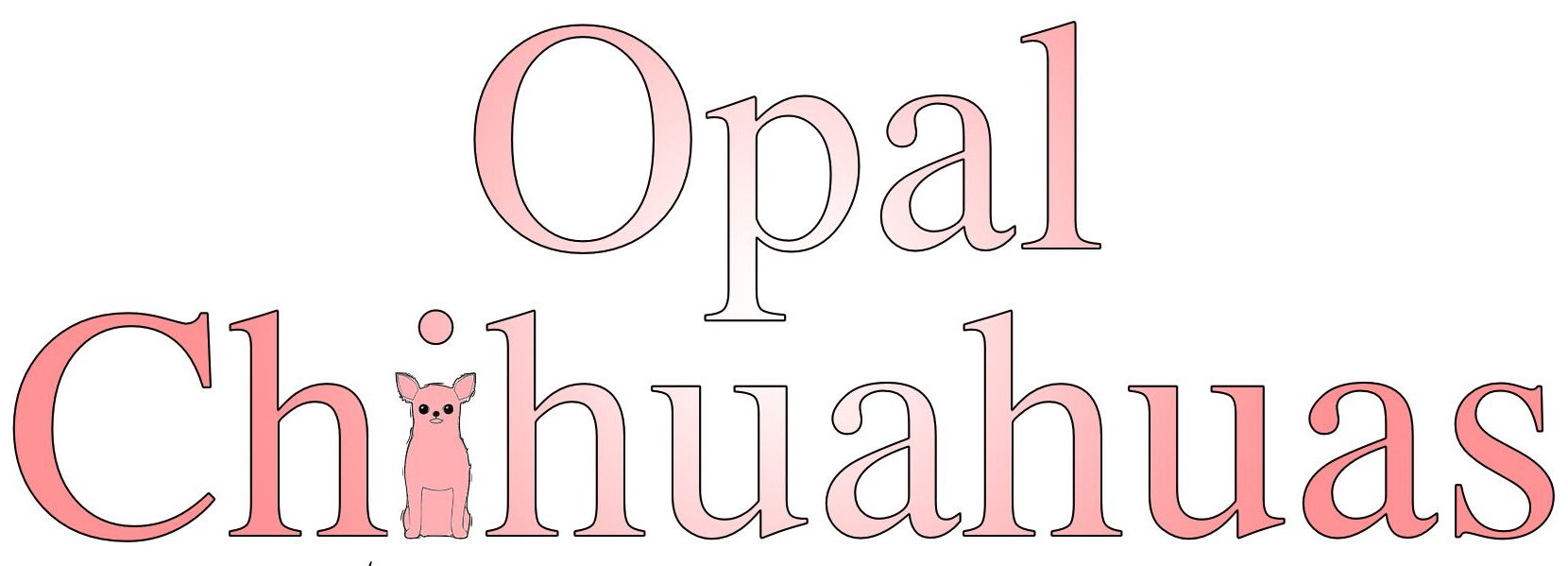HYPOGLYCEMIA:
New Chihuahua Owners Need To Read!
In some respects, bringing your new Chihuahua puppy home is like bringing home a tiny newborn human baby. Most important! Chihuahuas, like many other toy breeds, may be susceptible to a form of low blood sugar called hypoglycemia.
You probably won’t experience low blood sugar (with your particular puppy) but, in the event that you do, it is an emergency. Small dogs, especially Chihuahuas, have a very small fat reserve around the liver. When they get stressed for some reason (like going to a new home), or if they play too hard (using a lot of energy), or miss a meal, the fat reserve is used up and the body will begin to draw upon the blood sugar for energy. If this condition is left unchecked the dog will grow progressively weaker until it falls into a coma and eventually dies. The good news is that this condition is easily arrested and puppies that do experience hypoglycemia will usually outgrow it by 16 weeks of age. Your goal, as a new owner, should be to keep the puppy s stress level as low as possible during the critical period.
Often the most dangerous period is between six and ten weeks of age. During that time the puppy is weaned away from the dam, wormed, vaccinated, bathed, his toenails are trimmed, and sometimes he is sold into a new environment. Also, the immunity that a puppy gets from the mother’s first milk will drop off somewhere around the ninth week, and that will increase his vulnerability to virus and bacteria. All together, these factors contribute to a very stressful time for the little dog. Some puppies breeze right through it and others have problems.
Signs of hypoglycemia vary; usually the dog will get a sad forlorn look on its face, then it will become inactive, eventually staggering, falling down, or just laying down, followed by what looks like sleep. This sleeplike condition will turn into a form of tooth-clenching seizures and spasms, followed by a comatose condition, and, eventually, death. Not all symptoms may be seen at any one time so watch for any lethargic behavior or lack of coordination. If your puppy seems too sleepy, wake him up, stand him up and make sure he stands and can walk normally. If he lies back down, falls, or staggers, then get some sugar into him. If you are unsure of how to proceed then call your breeder and/or your veterinarian.
Hypoglycemia is seen most often in smaller specimens of Chihuahua puppy, but I caution all new owners to watch your puppy carefully until he is at least 16 weeks of age. If the puppy is a ‘tiny’, I won’t even sell a puppy until it is 12 weeks of age. This can cause bonding and socialization problems because the first 120 days of the puppy’s life are like “the formative years” in the life of a human child. What it comes down to is a judgment call by the breeder as to when the puppy is strong enough to leave. Once that call is made the new owner has to take over and become the puppy’s ‘Guardian’. It is hard to hold the breeders responsible for hypoglycemia when they aren’t there. While hypoglycemia could be a potential problem to any puppy, given the proper circumstances, it can be easily treated.
Sugar in the drinking water, honey, pancake syrup, nutri-cal vitamin paste, nutristat, (generic nutri-cal and less expensive), kids sugarcoated breakfast foods will help restore lost blood sugar. In severe cases a veterinarian may have to inject a glucose solution into the dog’s bloodstream. This occurs usually in cases where the dog is unconscious and unable to swallow. The injection is usually made into a major blood vein such as the jugular vein in the throat.
One good idea is to make sure your dog eats just prior to his being out of your sight for any extended period of time. You can also boost him with sugar in some form (except candy) before you leave him. You must make sure to leave some food available so the dog can eat while you’re away. Some Chihuahuas are nibblers who eat very slowly and some are down right finicky so take that into account and leave him with nutrition that is tempting enough that he will eat something while you are away from him.
Stress can be a real problem to some Chihuahuas. Common sources for high stress are, being sold and taken to a new environment, a temporarily depressed immune system caused by vaccinations, a radical and sudden change of diet, being terribly frightened by something. Some things humans might consider being of little consequence, such as trimming his toenails or giving him a bath, can be terrifying to your little dog. Like people, some dogs will handle stress better than others. The point being that you should minimize stress in your puppy’s life whenever possible and keep him eating to offset any possible bouts of stress-induced hypoglycemia.
____________________________________________
The Chihuahua Molera
(soft spot on head)
Sponsored by
The Chihuahua Club of America
Historically the Chihuahua as developed in Mexico and the United States has displayed a “soft spot” on the top of the head. In the Chihuahua, this spot, or fontanel, is know as a MOLERA, and is the same as that found in human babies. In the past, this molera was accepted as a mark of purity in the breed, and it is still mentioned in most Chihuahua breed standards the world over.
It is important to note that while some Chihuahua puppies are born without the molera, there are probably just as many born with one, and its presence is nothing to become alarmed over. The molera in a Chihuahua will occur on the top of the head and may vary in shape and size when present.
Unfortunately, many lay people (and some Veterinarians not familiar with the Chihuahua) have tried to link the mere presence of a molera with the condition known as hydrocephalus. This has caused many new comers to the breed serious concern and undo worry. The truth is that a domed head with a molera present does not predispose the Chihuahua to this condition.
Along with the observations of devoted breeders over the years, there is adequate medical evidence to support this statement:
* In “Diseases of the Brain”(1989), Green & Braund stated that many clinically normal toy breeds may have open fontanelles without associated hydrocephalus.
* Drs. Walters and Rivers, Veterinarians at the University of Minnesota, concluded that there did not appear to be any relationship between the presence or size of a fontanelle and the condition of hydrocephalus.
* Dr. Alexander de Lahunta of Cornell University in New York, one of the top neurologist in this country, stated that it would be wrong to conclude that any opening is abnormal.

